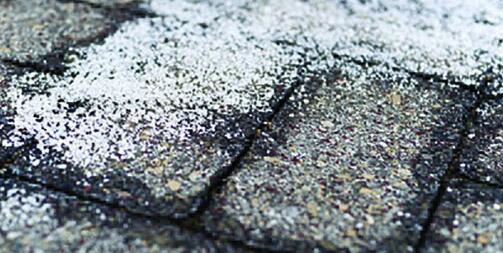Preventing salt damage to landscape plants

URBANA, Ill. – Americans use a lot of salt, according to Chris Enroth, a horticulture educator with University of Illinois Extension. “Potato chips aside, I’m talking about the amount of de-icing salt we put out into the environment every winter.”
How much deicing salt does America go through every year? A Purdue study showed property owners in the U.S. apply more than 15 million tons of deicing salts to their driveways, patios, and walkways, and that’s not including salt applied to roadways.
Salt comes in a variety of forms. Most deicing salts are identical to the table salt in our spice rack, sodium chloride. In its raw mineral form, sodium chloride is referred to as halite, better known as rock salt.
Deicing salts can have a negative effect on plants. Humans have known about the toxic effects of salt on plants for centuries. In fact, salt is thought to be the first biological weapon; ancient invading armies used salt to destroy enemy crops.
“Excess salt works two ways against plants,” Enroth said. “The first occurs in the soil when the sodium and chloride ions separate after dissolving in water. The sodium ions block the plant root’s uptake of other critical plant nutrients like potassium, calcium, and magnesium. Then the plants absorb the chloride, which interferes with photosynthesis.
“The second detrimental effect is how salt pulls water away and out of plant roots or leaves, the same way salt dries up a snail,” Enroth said. “This stunts plant growth and can lead to a dead plant.”
What can you do to protect landscape plants and lawns?
“Use alternative deicers that aren’t made of sodium chloride,” Enroth said. “Products that contain calcium chloride or calcium magnesium acetate have a lower risk of damaging plants. These lower-risk deicers are typically more expensive, but consider the cost of re-sowing lawn seed every spring or replacing a dead shrub or perennial year after year.”
Avoid deicers by putting down coarse sand on walkways. “The sand works, but be prepared with your vacuum as it often gets tracked in the house,” Enroth said. “Another strategy is to plant salt-tolerant plants near pavement that frequently gets treated with salt.”
Keeping walkways shoveled during the storm helps to alleviate the need for deicing chemicals. Sometimes ice build-up on walkways is unavoidable and use of a deicer is necessary. Enroth recommends the following methods to reduce salt damage to nearby plants:
- Hose off road salts that splash onto trees and shrubs as soon as possible or cover with burlap as a barrier to salt spray.
- Avoid planting in areas that will inevitably get treated with deicing salts.
- Salt can build up to lethal levels in the soil. As the weather warms, you can leach salts out of the soil by irrigating the area multiple times with deep waterings.
- Apply deicers before a storm arrives. You will also end up using less deicing material with this approach.
- If snow and ice are already covering your walkway, shovel and remove as much frozen stuff as possible before applying the deicer.